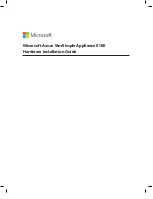
9-3
Cisco ME 3800X and 3600X Switch Software Configuration Guide
OL-23400-01
Chapter 9 Configuring Interfaces
Understanding Interface Types
Access Ports
An access port belongs to and carries the traffic of only one VLAN. Traffic is received and sent in native
formats with no VLAN tagging. Traffic arriving on an access port is assumed to belong to the VLAN
assigned to the port. If an access port receives an IEEE 802.1Q tagged packet, the packet is dropped, and
the source address is not learned. IEEE 802.1x can also be used for VLAN assignment.
You manually assign static access ports to a VLAN.
Trunk Ports
An IEEE 802.1Q trunk port carries the traffic of multiple VLANs and by default is a member of all
VLANs in the VLAN database. A trunk port supports simultaneous tagged and untagged traffic. An
IEEE 802.1Q trunk port is assigned a default Port VLAN ID (PVID), and all untagged traffic travels on
the port default PVID. All untagged traffic and tagged traffic with a NULL VLAN ID are assumed to
belong to the port default PVID. A packet with a VLAN ID equal to the outgoing port default PVID is
sent untagged. All other traffic is sent with a VLAN tag.
Although by default a trunk port is a member of multiple VLANs, you can limit VLAN membership by
configuring an allowed list of VLANs for each trunk port. The list of allowed VLANs does not affect
any other port but the associated trunk port. By default, all possible VLANs (VLAN ID 1 to 4094) are
in the allowed list. A trunk port can become a member of a VLAN only if the VLAN is in the enabled
state.
For more information about trunk ports, see
Chapter 10, “Configuring VLANs.”
Routed Ports
A routed port is a physical port that acts like a port on a router; it does not have to be connected to a
router. A routed port is not associated with a particular VLAN, as is an access port. A routed port behaves
like a regular router interface, except that it does not support VLAN subinterfaces. Routed ports can be
configured with a Layer 3 routing protocol. A routed port is a Layer 3 interface only and does not support
Layer 2 protocols, such as STP.
Configure routed ports by putting the interface into Layer 3 mode with the no switchport interface
configuration command. Then assign an IP address to the port, enable routing, and assign routing
protocol characteristics by using the ip routing and router protocol global configuration commands.
Note
Entering a no switchport interface configuration command shuts down the interface and then re-enables
it, which might generate messages on the device to which the interface is connected. When you put an
interface that is in Layer 2 mode into Layer 3 mode, the previous configuration information related to
the affected interface might be lost.
The number of routed ports that you can configure is not limited by software. However, the
interrelationship between this number and the number of other features being configured might impact
CPU performance because of hardware limitations. See the
“Configuring Layer 3 Interfaces” section on
page 9-19
for information about what happens when hardware resource limitations are reached.
For more information about IP unicast and multicast routing and routing protocols, see
Chapter 29,
“Configuring IP Unicast Routing”
and
Chapter 33, “Configuring IP Multicast Routing.”
















































